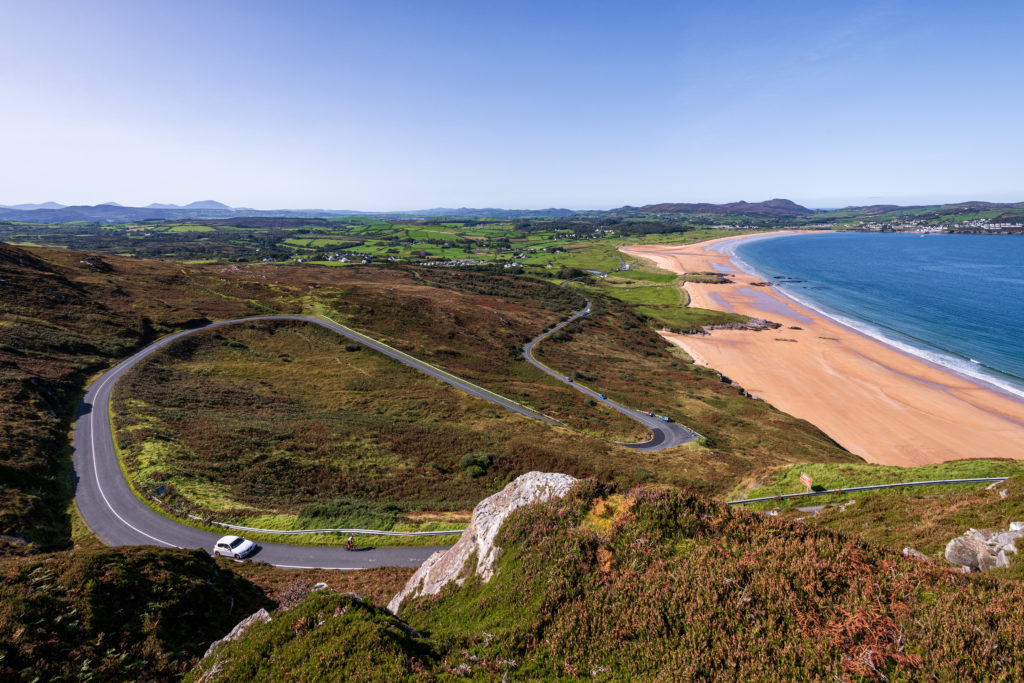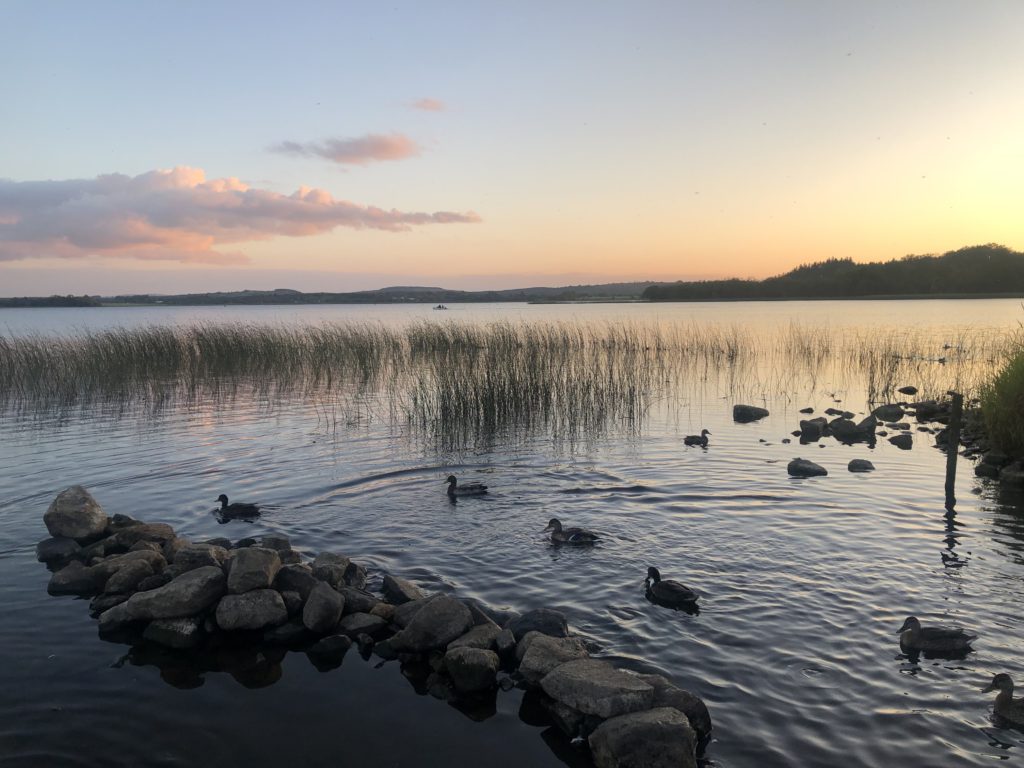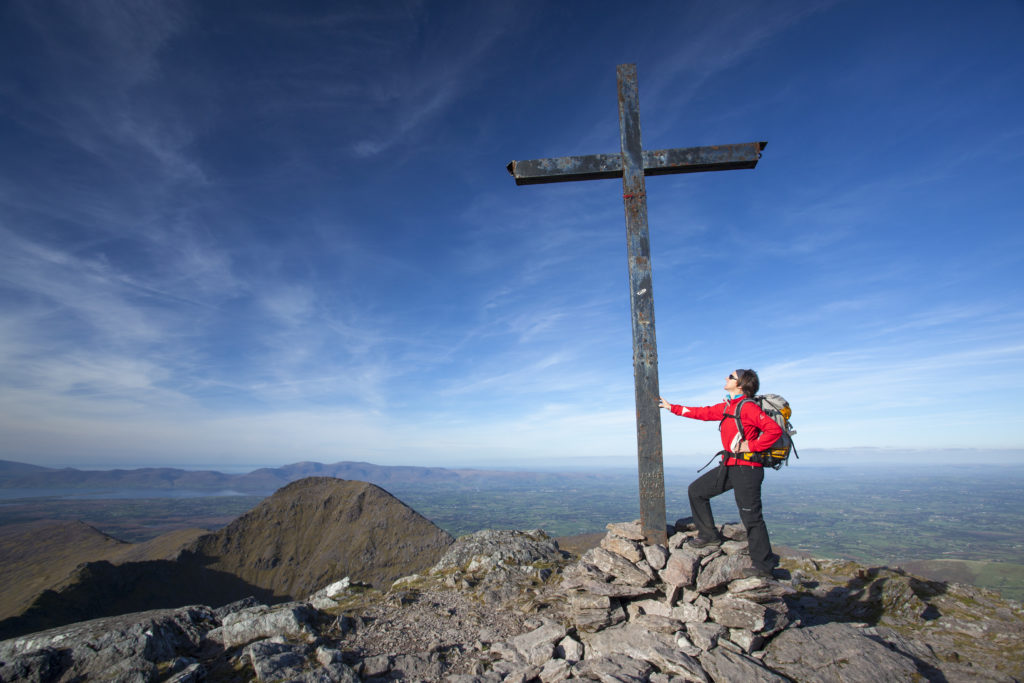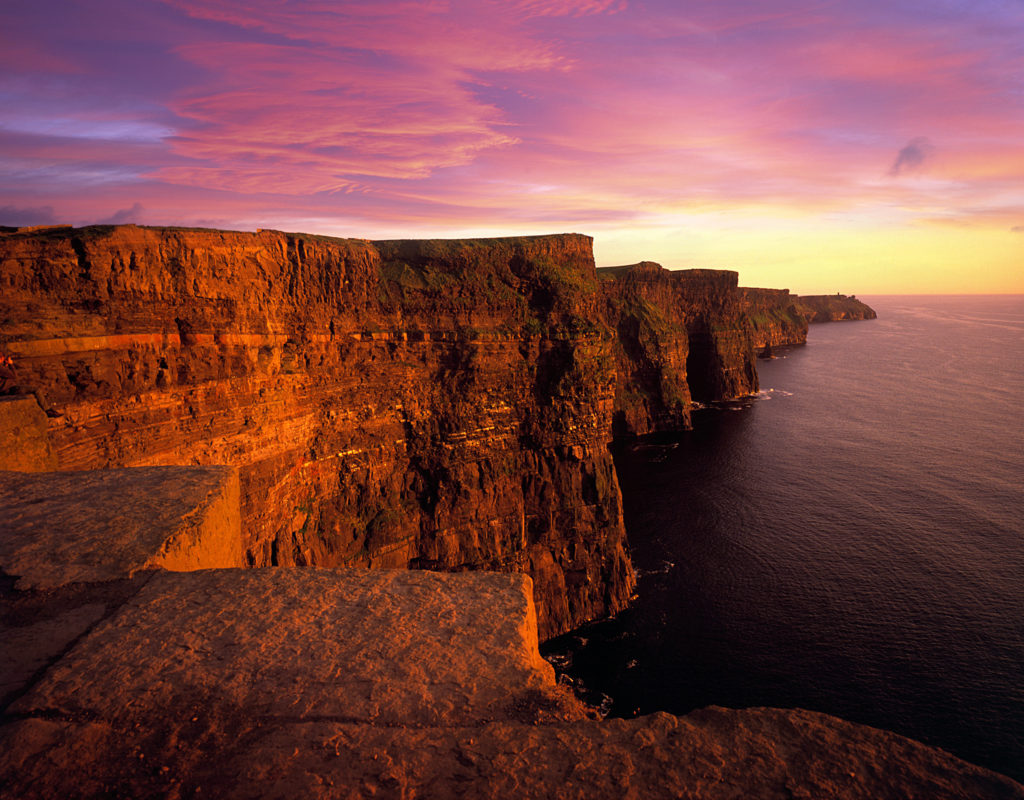THE Wild Atlantic Way, a 1,500-mile trail, stretches in spectacular fashion from the Inishowen Peninsula in Co. Donegal to Kinsale, Co. Cork.
The route provides an itinerary for visitors, signposted with recommendations for ‘discovery points’ — and what’s available in the immediate area in terms of culture, craic, cuisine, heritage, history and, really, whatever you’re having yourself.
The route takes in a snarling coastline punctuated by wide, rugged bays and sparkling beaches, wends past misty islands and along roads leading to the horizon.
From Cork to Connemara and then northwards to Ulster, you need only follow the road. It hugs the coast, threading its way gingerly along clifftops before making the odd abrupt turn and heading along laneways bleeding with fuchsia and honeysuckle.
DONEGAL
MALIN Head is Ireland’s most northerly mainland point. Once you’ve enjoyed the view, peel off your oilskins and head for the equally northerly Farran’s Pub — the cosiest place to withstand all that the Atlantic can throw at Co. Donegal.
Nearby, the cliffs at Slieve League are where the Old World comes to an abrupt end, with only three thousand miles and a million seabirds between you and New York. Geology takes on a dizzying dimension here. Different hues in the metallic ores accumulate with washed-down clays and soils to produce a scene of elemental beauty.
For the best views of the naked rock face plunging down to the restless Atlantic below, head along “One Man’s Path”, which traverses the ridge in spectacular fashion. However, this is no place for those scared of heights — or indeed widths.
 Explore the Donegal coast
Explore the Donegal coastAs well as boasting Ireland’s highest sea cliffs at Slieve League, the area includes some of Ireland’s most northerly mountains, the Blue Stacks — a magnificently surreal landscape. You’ll be struck by the almost wanton promiscuity of space, with moss- and bracken-covered uplands stretching to the horizon. This is Mother Nature in wild mood.
SLIGO
SLIGO’S tourist trail is justifiably well trodden — Benbulben, Lough Gill (aka the Lake Isle of Innisfree), and of course Drumcliffe Cemetery, W.B. Yeats’ last resting place, are all essential visits.
There are seven Wild Atlantic Way Discovery Points in Sligo, and one Signature Discovery Point — in other words, a high-profile viewing opportunity. Mullaghmore Head is Sligo’s Signature Discovery Point — a dramatic peninsula with sweeping views of Benbulben and the brooding silhouette of Classiebawn Castle (owned by the Mountbattens). It’s both a world-class surfing destination and a place of striking, elemental beauty.
Sligo town today has a reputation for being a place where the traditional and the bohemian have combined into an attractive mix.
The south of the county is a paradise for walkers, climbers and general view-addicts — in this corner of Connacht a rural way of life largely continues despite the encroachments of the modern world.
LEITRIM
LEITRIM only has two miles of coastline, but don’t mistake it for the Mild Atlantic Way. The county has plenty to offer aside from a couple of miles of beach. It’s off the beaten track, certainly — hiding away in the Hidden Heartlands — but that is a huge part of its charm. The watery landscape is also a major attraction.
There are 40 loughs within just 10 km of Ballinamore alone. You can bag one all to yourself, and the angling, particularly coarse fishing, is of seriously world-class quality.
But it’s equally a place where you can sit indolently on the loughside and watch a cast of characters that includes swans, herons, jumping brown trout and the odd kingfisher.
 The River Shannon in Co. Leitrim
The River Shannon in Co. LeitrimThe Shannon–Erne Waterway snakes through and along the county, with villages to moor at along the way. From Carrick-on-Shannon or Ballinamore you can rent a boat — even a multiple-berth luxury cruiser — and get lost in the maze of loughs and rivers.
MAYO
SITUATED at the southerly corner of Clew Bay, Westport looks out onto the Atlantic. Or nearly does. You can’t actually see much of the main ocean because the bay is littered with a vast number of almost impossibly beautiful, green-topped islands.
The county has several Discovery Points, aside from Clew Bay: Downpatrick Head, Keem Strand and Killary Harbour.
Killary Harbour in Connemara is such a singular place to stare out at the sea that the philosopher Ludwig Wittgenstein came to live here after the Second World War. It’s probably where he came up with the line, “Don’t think, but look.” Which is an odd thing for a philosopher to say, when you think about it.
But his call to attend directly to what is before us is almost tailor-made for Connemara.
Wittgenstein had many views on life and the meaning of it all, but even he would have agreed that a good seaside holiday has to have a tip-top place to stay — in this case it’s Renvyle House (renvyle.com).
Keem Bay, also a WAW Signature Discovery Point, regularly makes it onto any list of the world’s most beautiful beaches. At the far western tip of Achill Island, this is one of Europe’s most breathtaking coves — a perfect crescent of white sand framed by soaring green cliffs.
As an island race we’re drawn to the seaside, even if we live in London. The tang of brine and kelp in the air, the surge of the ocean — and a long walk in winter or summer alongside the crashing waves. This part of the Wild Atlantic Way has it all.
For a good overview of Mayo, swing by the Clew Bay Heritage Centre on The Quay in Westport. Here you’ll find a higgledy-piggledy collection of artefacts — including flachters and scraws for turf-cutting, coins, ancient postcards, stamps and documents. In fact, with the exception of the aforementioned flachters and scraws, more or less the contents of your office drawer.
Mayo has a lot going for it: Knock Shrine and Croagh Patrick for contemplation, The Quiet Man industry at Cong for film buffs, and of course Clew Bay itself, with the formidable crags of the Nephin Beg range nudging the Atlantic.
GALWAY
GALWAY City keeps up a steady pageant of entertainment throughout the year, with everything from the arts (of every conceivable interpretation) to festivals featuring the world’s most celebrated oysters.
The county, stretching from the wilds of Connemara through the Corrib country and on to the banks of the Shannon, includes some of the most evocative parts of Ireland — the Emerald Isle of films, postcards and song.
Galway and legends go hand in hand. This was Christopher Columbus’s last port of call in 1492 before heading out across the Atlantic. Needless to say, a Galway man hitched a ride aboard the Santa Maria. And it was this man, according to local legend, who was first off the rowing boat that landed on America’s shores. “Not a bother, Chris, I’ll do it,” he shouted as he dragged the boat up onto the beach, becoming the first European to land in the New World.
Columbus celebrated Mass in the Collegiate Church of St Nicholas, founded in 1320, asking for divine guidance for his venture. This, Ireland’s largest medieval church, is dedicated to St Nicholas of Myra — or Santa Claus — so they have special services come Crimbo.
Despite the best efforts of Cromwellian soldiers, many medieval features remain at St Nicholas: ancient bells, a delicately decorated paved floor with gravestones dating from the 16th to 18th centuries, and outside, gargoyles and grotesques. The difference? Gargoyles flush excess water away; grotesques are just there for the craic.
Wandering round Galway, you wonder what Columbus might have made of the place — and indeed his forthcoming escapade. Was he ever tempted just to shelve the whole idea and maybe settle down with a nice Galway girl? Perhaps he went out onto Market Street humming, “Her hair was black and her eyes were blue...”
Grapes and Galway have long been intertwined, and indeed a resonance can still be found amongst the winemakers of continental Europe. A group of Catholic wine merchants left Galway in the 1700s to escape the Penal Laws — the Wine Geese, as they became known. Irish merchants in various parts of the continent at this time were crucial in the development of Atlantic trade.
A passion for fine wines remains in Galway today. The Merchants Wine Club (Corn Store, Middle Street) is one of the city’s leading retail outlets, with over 400 wines stocked here.
For other pintage, head for Busker Browne’s Bar on Cross Street. This relatively new pub and bistro has an Old Galway ambience, with alcoves, nooks and crannies. Roisin Dubh (Upper Dominick Street) is an old established pub featuring big-name artists (traditional to world music) as well as sessions and ballad groups. If you want a more When Irish Eyes Are Smiling sort of night — and hey, who doesn’t the odd time? — then head for An Púcán in Forster Street.
The Bunch of Grapes, High Street, conjures up images of Galway in the rare oul’ times. You’ll get a cosmopolitan mix of punters — locals and trendy types.
The Living Room, Bridge Street, is a lively, modern bar where Galway’s up-for-it locals meet.
For traditional music, Tigh Neachtain, Quay Street, is a gem, even in a city studded with them. They say you should always pick a new perfume or aftershave when you’re going on holiday — forever after, that smell will remind you of good times had. No need for that here — the tang of stout, old wood and ale will never let you forget this singular pubbing experience.
Galway is increasingly seen as the culture, cuisine and craic capital of the country. Conveniently situated on the edge of the Atlantic, it’s the place to go for cask-conditioned, party-size craic ’n’ roll.
Outside the city, the Wild Atlantic Way points you towards the Signature Discovery Point of Derrigimlagh Bog. The Atlantic blanket bogs of Roundstone, Connemara, are serene, remote places teeming with wildlife. They also have a footnote in transport history: Derrigimlagh, at the western edge of the bog, is where Alcock and Brown’s aircraft landed in 1919. The world’s first-ever transatlantic flight terminated here in Co. Galway. It wasn’t really a budget flight — the cost was in the region of £4,000 to £5,000, which in today’s money is roughly two shedloads.
KERRY
 The summit of Carrauntoohil at MacGillycuddy's Reeks in Co. Kerry
The summit of Carrauntoohil at MacGillycuddy's Reeks in Co. KerryKERRY boasts 27 Wild Atlantic Way Discovery Points. Highlights include the Ring of Kerry, covering the 110-mile (180-km) circular road around the Iveragh Peninsula — passing through Kenmare, Sneem, Waterville, Cahersiveen and Killorglin.
Highlights en route include Muckross House, an elegant Victorian country mansion in the neo-Tudor style. Tours of the house allow you to check out how the Ascendancy — the Raj in the Rain — lived in the 19th century in their Big Houses.
The extensive gardens benefit richly from the mild climate and sheltered aspect of the grounds — everything from strawberry trees to giant sequoias grows here.
Off the westerly reaches of the Ring of Kerry lies one of Ireland’s three World Heritage Sites, the Skelligs.
Rising some 700 feet out of the ocean, the huge, precipitous mass of slate rock a dozen or so miles into the Atlantic was once home to a community of monks — obviously just some zealous guys. The monastery plied its business of praying for the people of Ireland for 600 years from 588 AD.
Stand and look in awe.
CLARE
CLARE boasts two of Europe’s truly unique sights — the Burren and the Cliffs of Moher. The skeletal limestone landscape of the Burren is a spectacularly weird and beautiful scene. The WAW Discovery Point here is Caherconnell Stone Fort. Built over a thousand years ago, it remained in use into the 17th century (the folk in Connemara have always been restless), and its size — more than twice that of your typical ring fort — hints at the elevated status its occupants once held.
A visitor centre features a short audio-visual presentation introducing the broader Burren region, its megalithic tombs (including the nearby Poulnabrone Dolmen) and the excavation history of the fort itself. Then comes the guided tour of the ring fort, its dry-stone walls still imposing.
OK, I know that most of youse (and me) go to places like the Burren for peace and tranquillity, and tend to shy away from visitor centres. But a few of those on the Wild Atlantic Way are top class. For once, make an exception.
The Cliffs of Moher, a Discovery Point on the WAW, have a simple recipe: stand on this windswept place overlooking the churning ocean, feel the salt on your lips, and enjoy the glorious view.
From here to Clare.
 The awesome Cliffs of Moher in Co. Clare
The awesome Cliffs of Moher in Co. ClareCORK
CORK is graced with a bucolic landscape resembling a soft-focus Guinness advert. This marks the southern gateway to Ireland’s Wild Atlantic Way — the start or finish, depending on which way you’re driving. Either way, it’s a stretch that shows the route at its most varied and vivid.
From the colourful harbour town of Kinsale, famed for its seafood and sailing, the road sweeps west through Clonakilty, Skibbereen and Bantry, tracing a coastline of coves, headlands and islands that seem made for exploration.
West Cork is the Wild Atlantic Way in microcosm: wild and windswept one moment, lush and sun-dappled the next. Villages like Glandore and Baltimore open onto deep blue inlets where dolphins are sometimes seen following the ferries. Offshore lie Cape Clear, Sherkin and Dursey islands — each with a character all its own. Dursey even has its own cable car for access. Beyond them, the Atlantic stretches unbroken to America.
The Wild Atlantic Way passes through Mizen Head, Ireland’s most south-westerly point, where a dramatic bridge links the mainland to the old signal station — and the views are pure exhilaration.
Inland, artisan food trails, music pubs and ancient stone circles remind travellers that Cork’s spirit is as rich as its scenery. Whether you linger or loop back, this section of the Wild Atlantic Way captures the full poetry of Ireland’s western shore.

